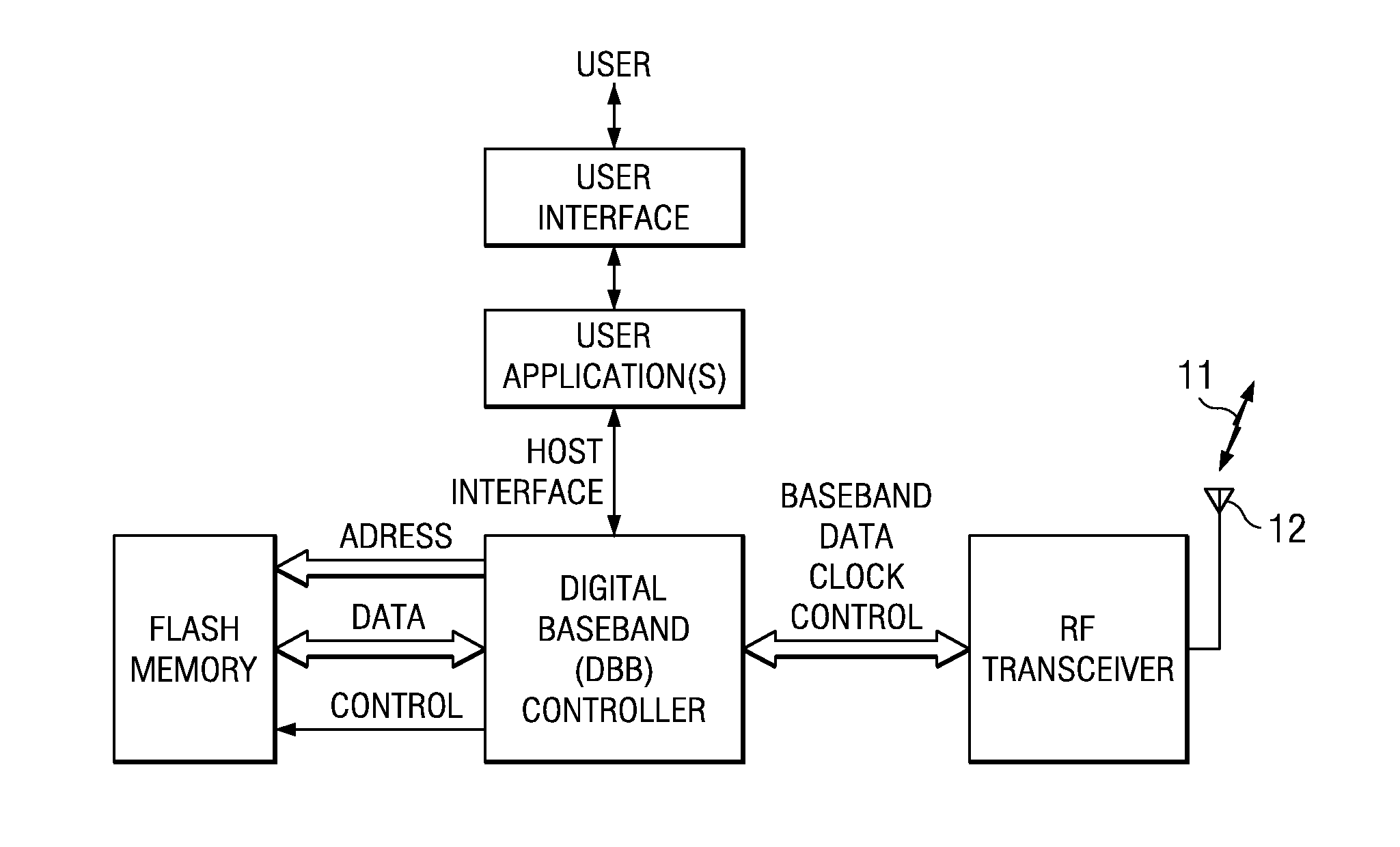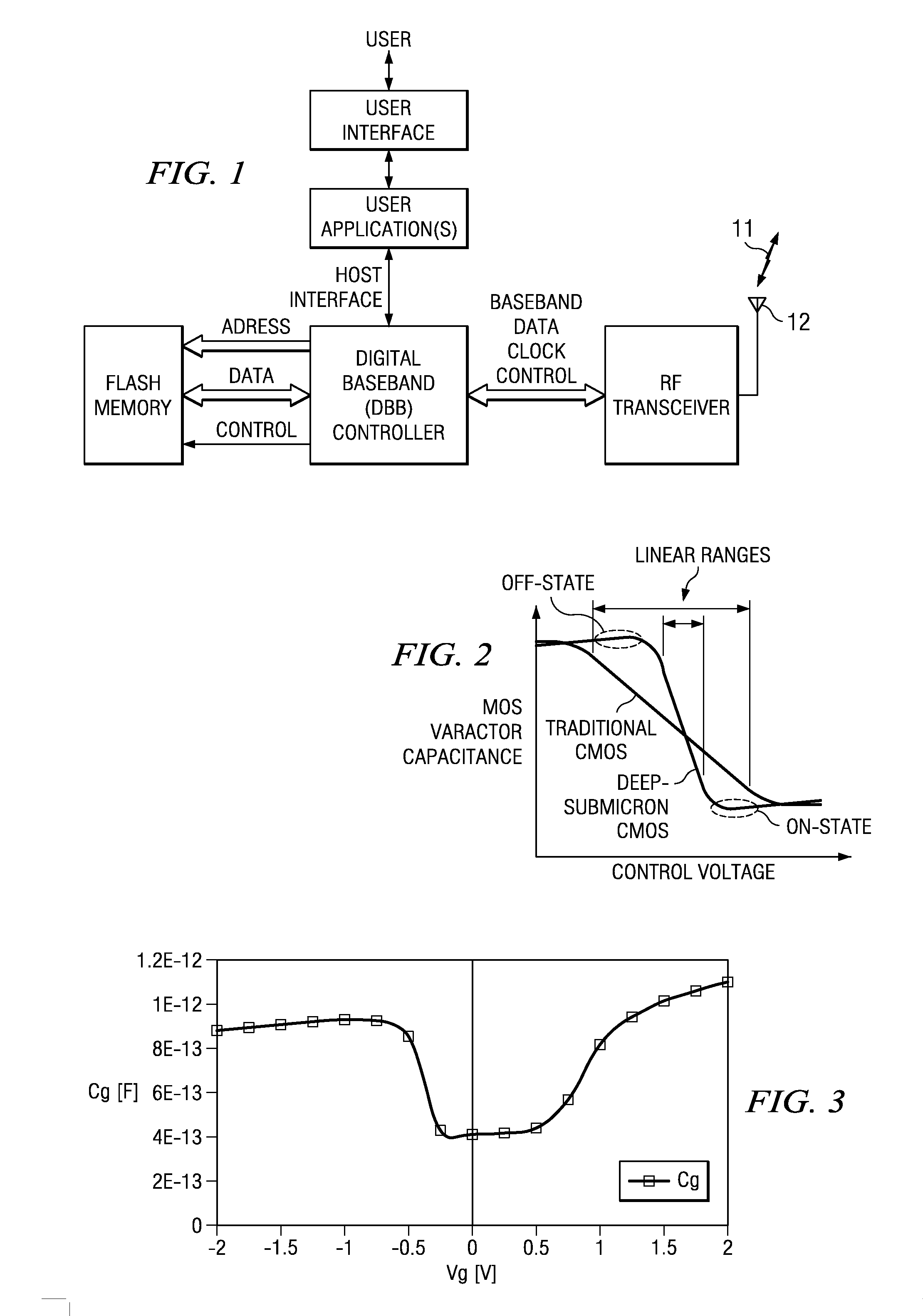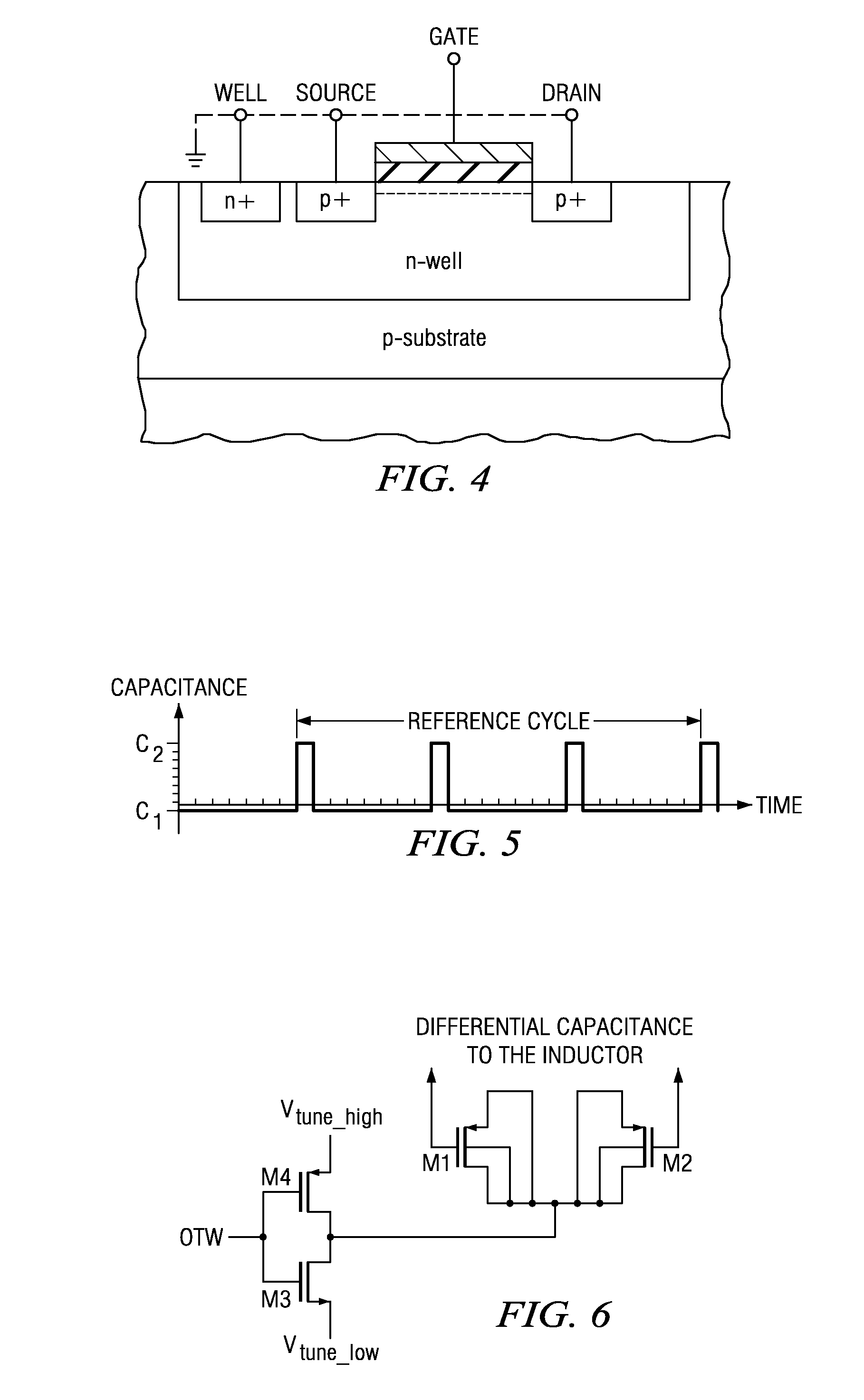All-digital frequency synthesis with dco gain calculation
a digital frequency and gain calculation technology, applied in the field of communication, can solve the problems of difficult integration of analog baseband with digital baseband, low dco gain, and low dco gain,
- Summary
- Abstract
- Description
- Claims
- Application Information
AI Technical Summary
Benefits of technology
Problems solved by technology
Method used
Image
Examples
Embodiment Construction
[0079]The ultimate goal in mobile wireless integration is a single-chip digital radio as shown in FIG. 1, although the present invention is not limited to use in a single chip digital radio design. In some examples, the digital baseband controller (DBB) can be based on a digital signal processor (DSP) or the ARM7 microprocessor and is responsible for taking the digital data stream from the RF transceiver and performing any necessary digital signal processing on it to convert the digital data stream into a stream of user data. Examples of the processing performed by the DBB controller may include digital filtering, data encoding and decoding, error detection and correction. It can also implement, for example, the GSM cellular or BLUETOOTH protocol layer stack which is controlled by a software program stored in a non-volatile flash memory. User applications running on, for example, a microprocessor or DSP, can communicate with the DBB controller and a user interface (e.g., a keypad, v...
PUM
 Login to View More
Login to View More Abstract
Description
Claims
Application Information
 Login to View More
Login to View More - R&D
- Intellectual Property
- Life Sciences
- Materials
- Tech Scout
- Unparalleled Data Quality
- Higher Quality Content
- 60% Fewer Hallucinations
Browse by: Latest US Patents, China's latest patents, Technical Efficacy Thesaurus, Application Domain, Technology Topic, Popular Technical Reports.
© 2025 PatSnap. All rights reserved.Legal|Privacy policy|Modern Slavery Act Transparency Statement|Sitemap|About US| Contact US: help@patsnap.com



